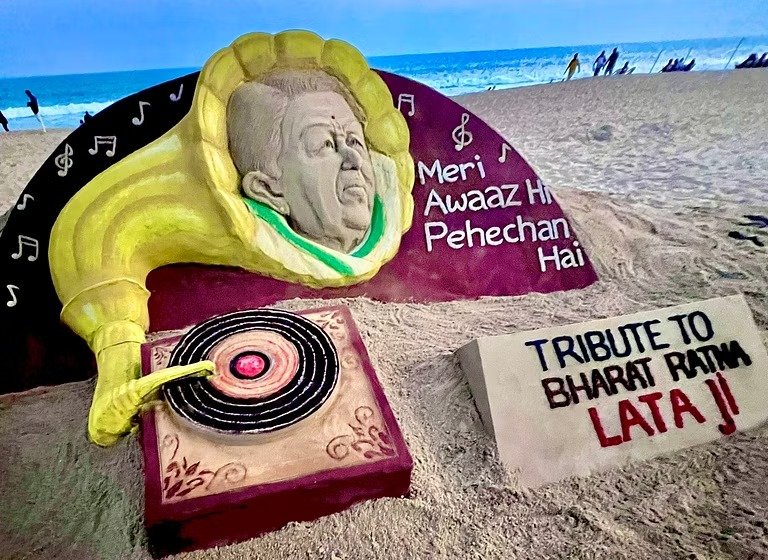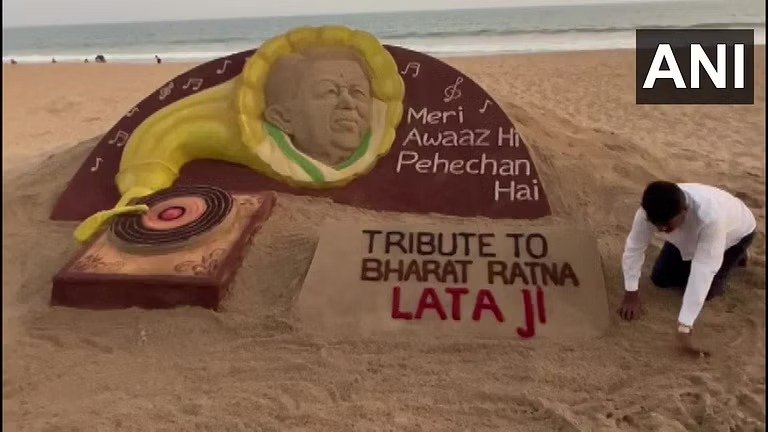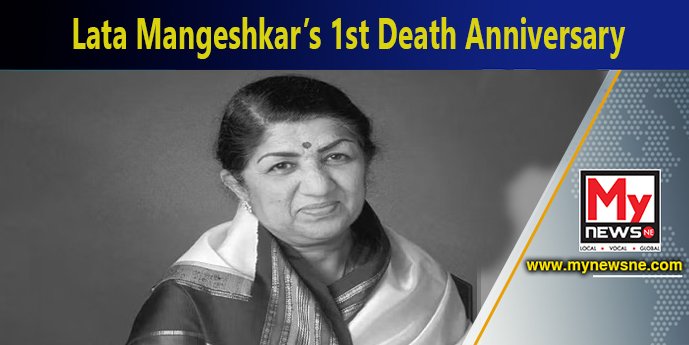Artist Sudarsan Pattnaik Pays Tribute To Lata Mangeshkar Through Sand Art | Check Out
Guwahati: Renowned sand artist Sudarsan Pattnaik paid tribute to her through his artwork on the first anniversary of Lata Mangeshkar’s passing.
Sand artist Pattnaik made a 6 foot tall sand sculpture with the words “Tribute to Bharat Ratna Lata Ji, Meri Awaaaz Hi Pehechan Hai,” at Puri Beach in Odisha.
Lata Mangeshkar passed away at the age of 92 at Mumbai’s Breach Candy Hospital on February 6 of last year.
Lata Mangeshkar also known as Lata di, was a name that was synonymous with music in India. The Queen of Melody was as melodic as a nightingale and moved the entire country with her powerful voice.
She had a nearly eight-decade career and was honoured for her work in the Indian music industry with the Bharat Ratna and Dada Saheb Phalke awards.
She embodied a movement, a whole era, and an enduring stage in Indian music. Language, caste, faith, culture, geography, and religion were no match for the strength of her voice, which cut across all of these divisions.
Lata was born on September 28, 1929 to a Marathi-speaking family in Indore, which was formerly a part of the Central India Agency but is now in Madhya Pradesh. She was the oldest of five children. Her father Pandit Deenanath Mangeshkar was a well-known actor and classical singer.



Shevanti’s mother was a Gujarati woman from Thalner in what is now northwest Maharashtra. She was Deenanath’s second wife after the passing of his first spouse, Narmada, Shevanti’s older sister.
Lata first experienced classical music at the tender age of five, thanks to her father’s benevolent instruction. He belonged to the Gwalior Gharana, a group of musicians that perform in accordance with a particular musical aesthetic. Amanat Ali Khan and Aman Ali Khan, two musical legends, also taught her.
The mantle of responsibilities fell on Lata’s shoulders at the age of 13 with the demise of her father, due to heart disease. It was at that age that she recorded her first song, ‘Naachu Yaa Gade, Khelu Saari Mani Haus Bhaari’, composed by Sadashivrao Nevrekar for Vasant Joglekar’s Marathi film ‘Kiti Hasaal’, though the song did not make the final edit. Navyug was a close friend of the Mangeshkar family.
She battled during her adolescent years to provide for her family and to establish herself as a playback singer in 1940s Bollywood, when divas like Shamshad Begum and Noor Jehan dominated the industry. She recorded her debut Hindi song, “Mata Ek Sapoot Ki Duniya Badal De Tu,” for the Marathi movie “Gajaabhaau” in 1943.
Lata received her first significant break with the song “Dil Mera Toda, Mujhe Kahin Ka Na Chhora,” written by Nazim Panipat for the film “Majboor” in 1948. The song became her first significant film hit, and shortly after, she cut “Uthaye ja unke sitam” for “Andaz” in 1949, which forever changed the course of her life.
She continued to provide playback singing for all the major leading ladies, including Madhuri Dixit, Preity Zinta, Waheeda Rehman, and Nargis, across each generation of Bollywood. Musicians like Naushad Ali, Madan Mohan, and S.D. Burman once created songs particularly to take advantage of her versatile soprano.
Her accuracy in holding a note or navigating challenging passages that call for an agile, acrobatic voice remained unequalled and excellent throughout her career. Even the most well-known singers occasionally make mistakes or strike a note slightly off-key, but not Lata.
She received the Padma Vibhushan in 1999, one of India’s top civilian honours. She received the Bharat Ratna, India’s highest civilian award given by the government for the highest order of accomplishment in any field, almost two years later in 2001, behind Satyajit Ray only by one. She launched the Master Deenanath Mangeshkar Hospital in Pune that same year, which was run by the Lata Mangeshkar Medical Foundation, which was established in October 1989.
A scene from her 1987 song “Wada Na Tod” from the movie “Dil Tujhko Diya” appeared in the Hollywood production “Eternal Sunshine of the Spotless Mind” from 2004.

